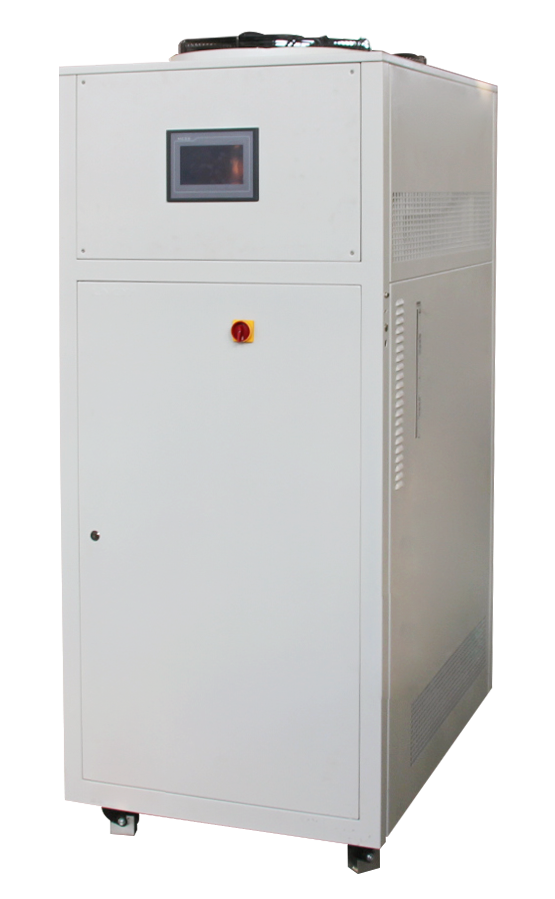Perspectivas de desarrollo de sistemas térmicos de pruebas electrónicas
For the modern society, energy conservation and emission reduction is also an important task. In the development of semiconductor, chip, integrated circuit and other industries, the electronic test thermal system can effectively test its temperature range to ensure that such components can Effectively get test results to avoid energy waste and increase costs.
The electronic test thermal system has a cooling function when passing through direct current. Since the semiconductor material has considerable thermoelectric energy conversion performance characteristics, thermoelectric cooling is called an electronic test thermal system. The electronic test thermal system can improve the actual cooling performance of the electronic test thermal system by optimizing the design of the electronic test thermal system module, reducing the difference between the ideal performance coefficient of the electronic test thermal system module and the actual performance coefficient.
Since the heat dissipation of the electronic test thermal system is equal to the sum of the cooling capacity and the input power, the heat dissipation effect of the electronic test thermal system is an important factor affecting the refrigeration performance of the semiconductor. The electronic test thermal system adopts various types of enhanced heat dissipation methods to improve the cooling efficiency, and there are natural convection heat dissipation, forced convection heat dissipation, water cooling heat dissipation, phase change boiling heat transfer, etc., all of which can receive good results. Since the choice of heat dissipation method is very important in the design of the electronic test thermal system, the choice of which method should be combined with the use of the electronic test thermal system and the heat dissipation efficiency.
In recent years, research on electronic test thermal systems has received extensive attention from scholars at home and abroad. The subjects of interest are all-encompassing and involve almost all fields, such as military, scientific, aerospace, industrial, agricultural, medical, biochemical and daily necessities.
At present, domestic and foreign scholars’ research on semiconductors mainly focuses on semiconductor materials research and development, module design and manufacturing, and system optimization design. This requires the analysis of semiconductor refrigeration in principle. At the same time, the optimization of the performance characteristics of the electronic test thermal system and the heat dissipation conditions of the system are also the hotspots of the electronic test thermal system research. By studying the excellent value coefficient Z of the electronic test thermal system, the manufacturing process of the electronic test thermal system, and the design external change Thermal mode, optimized internal thermocouple structure and overall electronic test thermal system device structure. With the rapid development of science and technology, the size of product devices is getting larger and larger, some are getting smaller and smaller, some conditions are more and more complicated, and many factors need to be considered. How to solve the optimization problem of high-power semiconductor multi-stage refrigeration, the local heat dissipation problem of small-sized devices, and the multi-factor semiconductor thermoelectric energy conversion problem have become the contents of continuous research in the future.
The combination of electronic test thermal system and semiconductor industry, its use range is also more and more extensive, and its electronic test thermal system temperature control is not only mature, but also has certain development space in the future.

(Nota: Algunos de los contenidos originales son de documentos relacionados. Si la infracción, por favor póngase en contacto con nosotros a tiempo para eliminar, gracias).
Recomendaciones relacionadas
-
Método de instalación del sistema de control de temperatura de calefacción y refrigeración para motor de automóvil
1695In chemical and pharmaceutical, chemical laboratories, pilot plants and other industrial processes, the heating and cooling temperature control system is the most used equipment for temperature control in chemical manufacturing, so a highly dynami...
Ver detalles -
How is the refrigerant installed in the vocs condensing unit?
2008The vocs condensing equipment is LNEYA's equipment for condensing adsorption of various vocs gases. Among them, the refrigerant of vocs condensing equipment is also indispensable. So, how should the refrigerant be treated? For various refrigeratio...
Ver detalles -
LNEYA Baño termostático de baja temperatura instrucciones
2037Low temperature thermostat is widely used in petroleum, chemical industry, electronic instruments, physical, chemical and biological engineering, medicine and health, life sciences, food industry, physical testing and chemical analysis and researc...
Ver detalles -
Relación entre el bajo rendimiento frigorífico y el refrigerante en la industria de baja temperatura
1480El efecto del sistema de refrigeración del frigorífico industrial de baja temperatura está directamente relacionado con el refrigerante. Una vez que el refrigerante tiene fugas, la capacidad de refrigeración será insuficiente, por lo que las presiones de succión y escape son rela...
Ver detalles
 LNEYA Enfriadoras industriales Fabricante Proveedor
LNEYA Enfriadoras industriales Fabricante Proveedor












